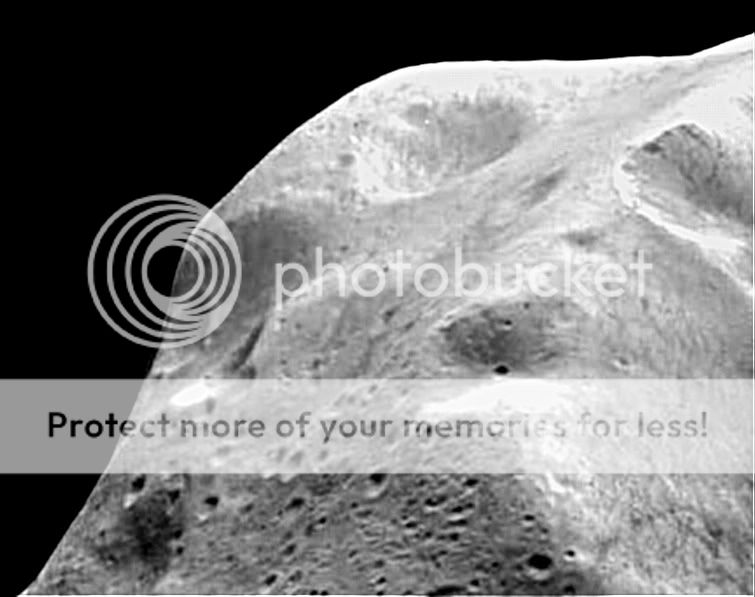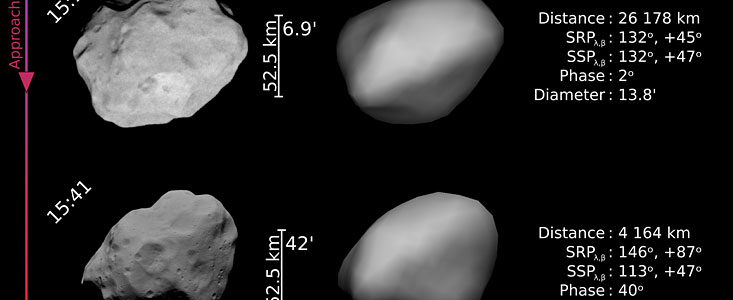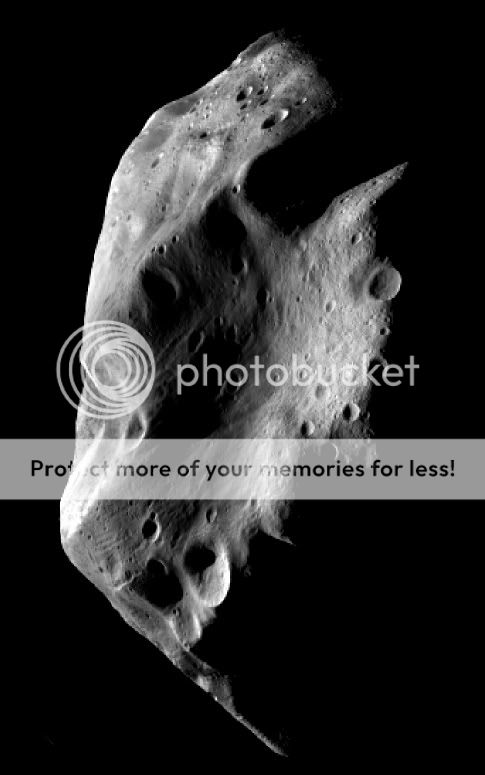Thanks Wayne,
It is good to see a list like that. I knew about the sizes, but seeing them listed like that is very informative.
Quite a motely crew too.
I will reciprocate, copied your list & put types & miscellaneous other notes.
21 Lutetia 132x101x76 km [Rosetta 2010] Still not clear, density type S, surface texture suggests type C or D. Rotates on its side like planet Uranus & asteroid 433 Eros. As Wayne pointed out 21 Lutetia by far is the largest asteroid seen up close to date.
253 Mathilde 66x48x44 km [NEAR 1997] Type C, Carbonaceous. Extremely slow rotator, one rotation taking just over 17 days (only asteroids 288 Glauke & 1220 Crocus take longer to rotate on their axis). Very low density with gigantic deep craters, suggesting rubble pile construction, however NEAR did measure a Mass Concentration, later identified to be located in a 'ridge' on the asteroid, so there is some solid material there.
243 Ida 59x25x19 km [Galileo 1993] Type S, Silicate Rich. Strange shape, remote possibilty of being a contact binary with rubble infill (I am doubtful). Gravity data suggests a solid coherent object.
433 Eros 33x13 km (NEAR landed on it) [NEAR 2000] Type S, Silicate Rich. Rotates on it's side like planet Uranus & asteroid 21 Lutetia. First non main belt asteroid seen up close. NEAR actually landed at the end of the mission & did return data for a while post landing. Gravity data suggests a solid coherent object.
951 Gaspra 18x10x9 km [Galileo 1991] Type S, Silicate Rich. Has some Olivine enrichment in places & has a fossil magnetosphere. Gravity data suggests a solid coherent object.
5535 Annefrank 6.6x5.0x3.4 km [Stardust 2002] Type S, Silicate rich.
2867 Steins 5.9x4.0 km [Rosetta 2008] Type E, Enstantite Achondrite type, extremely rare, one of only 27 known. Most certainly originated in the mantle of a much larger body.
9969 Braille 2.1x1x1 km [Deep Space 1 1999]. Type V, Vestarian type. Possibly a chunk knocked of giant main belt asteroid 4 Vesta. Deep Space 1 unfortunately was facing the WRONG WAY at closest approach due to a software error & took readings & images of deep space instead. What a shame.
(243 Ida 1) Dactyl 1.6x1.2 km [Galileo 1993] {Satellite of Ida} As mentioned, moon of 243 Ida, type S Silicate rich, but appears greyer & less 'red' than the parent asteroid.
25143 Itokawa 0.5x0.3x0.2 km [Hayabusa 2005; it probably landed and may have returned some material to Earth] Type S, silicate rich, rubble pile, very low density.
Fascinating topic. Looking forward to the Deep Impact Comet 103P/Hartley 2 pass in less than a month now. Next August DAWN will hopefully show us what a giant asteroid really looks like when 4 Vesta is reached. Mean diameter 468 KM!!!!!!

:shock:
Andrew Brown.













